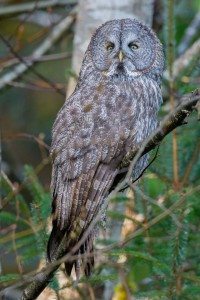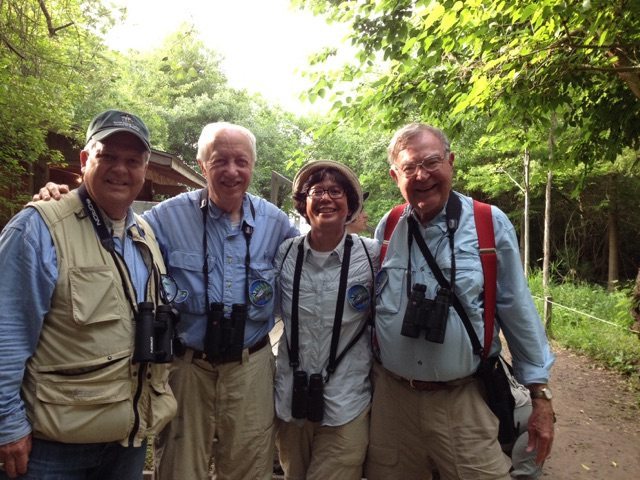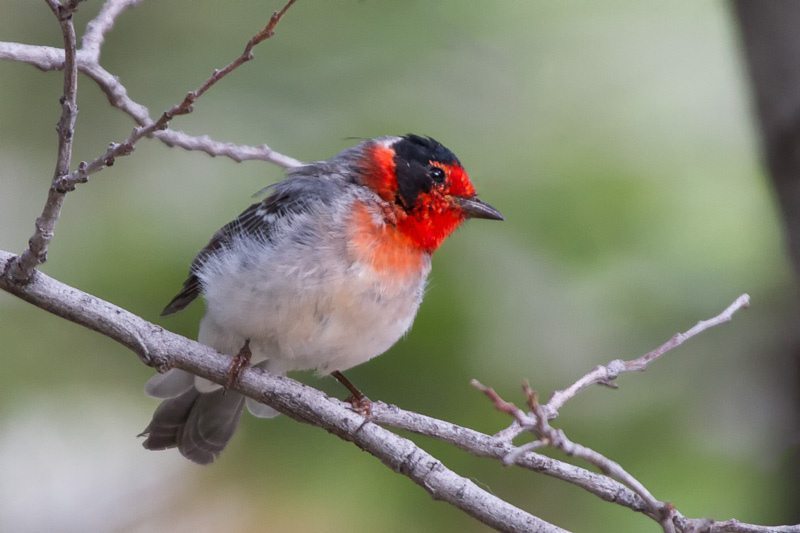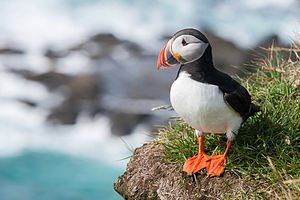Lessons Learned from Lani’s Big Year
Note: This is the final installment in a series of 11 blog posts by GGBA member George Peyton about his other half Lani Rumbaoa’s effort to see over 600 bird species in the Lower 48 states in 2015. Lani finished the year with a total of 641 species on her Big Year list!
By George Peyton
When Lani and I were birding on the King Ranch in South Texas in early November 2015, looking for a Ferruginous Pygmy-Owl, a difficult-to-see bird species, we ran into Brandon Reo, who was also doing a 2015 Big Year. By that time he had already seen 644 species in the Lower 48 States, while Lani had then only recorded 620.
I asked Brandon what was the secret to his Big Year success, and he promptly responded: “Unlimited time and money.” He went on to indicate that he was the CEO and owner of a successful company in New Jersey, and while he continued to manage it, he was able to leave work for birding at any time. Furthermore, he had the money to be able to fly immediately to any sightings of rare birds needed for his Big Year list. He pointed out that he had flown twice from New Jersey to Texas in the past month alone, each time to chase after just one rare species to add to his list.
That is definitely not the way it worked for Lani and me. But it is true that Lani had arranged to be away from her work as a store manager for up to half of the year, and we actually birded outside of the San Francisco Bay Area — 15 states in addition to California — for almost a full six months of the year. Also 2015 was without question by far the most expensive year ever for us, due to the high cost of air travel, rental cars, lodging, and food, as well as other expenses such as bird guiding fees related to Lani’s Big Year of Birding.
While someone could undertake a localized Big Year effort – such as trying to see the maximum number of species in a specific county — without major additional expense or time off from work, any serious effort to carry out a Big Year in North America or the Lower 48 States as Lani did would require taking major time off from work and spending at least $25,000 to $30,000.
James McKay – Lani’s Big Year competitor and now our good friend — addressed the challenge of high expenses and time off from work by taking early retirement as a senior attorney for the federal courts in Phoenix, and then purchasing a Toyota Tundra Pickup Truck and an Airstream Trailer. He spent much of the first seven months of 2015 driving with his 87-year-old father and fellow birder, Monroe — criss-crossing the U.S. from one good birding spot to another, overnighting in campgrounds and trailer parks, and cooking most of their meals themselves. While this strategy did save a significant amount of money, it turned out to be very exhausting, partially because of the long drives required after birding was finished, sometimes until late at night.

Reflecting back on Lani’s Big Year, here are the factors that I believe made it a big success:
Planning
This was absolutely crucial. Carrying out a successful Lower 48 Big Year means juggling schedules to be in all of the right places around the U.S. at the very best times to see the maximum number of new bird species. As Lani’s planner, I spent over 350 hours planning and making reservations during the last half of 2014 — even before Lani’s Big Year began — and was carrying out planning activities almost every day of 2015. It is difficult for one person to do everything needed for a successful Lower 48 Big Year, so it was fortunate that Lani and I worked well together as a team.
Total Focus on Target Birds
Although I have been actively birding for almost 68 years now and have seen over 6,500 bird species worldwide, I am not a Lister at heart. Listers are focused primarily on seeing new Life Birds or at least seeing specific bird species that are unusual or rare, as well as often keeping multiple lists such as lists of all the birds they’ve in a particular city, county, state, etc. I have a friend who keeps a list of all bird species he has seen looking out the window from inside of a bar, and that includes a Snowy Owl. In effect, it is much like a game or a competition.

While I infrequently keep lists in my normal birding, I soon realized that we needed a total focus on adding new bird species to Lani’s Big Year list. This was not so pronounced during the first two or three months of 2015 because there were still so many new species, but by the second half of the year, since there were relatively few new species yet to be seen ( Lani had already seen an amazing 530 bird species by June 30), it was essential to focus only on species she had not yet seen. That means we spent the last six months of the year birding extremely hard but only adding 111 new bird species to Lani’s Big Year List.
What Target Birding meant in practice was that I would prepare a new Target Bird List for each trip we took. During the last six months of 2015, I sometimes was making up a separate Target Bird List for each day we went birding. We would simply concentrate on birding in the area and habitat where Lani was most likely to see that particular Target Bird. The corollary was that we totally ignored other bird species, no matter how beautiful or rare they might be, if Lani had already seen them. This laser focus on Target Birds was absolutely essential to Lani’s success.
Very Good Bird Guides
While I was Lani’s “Bird Guide” for at least 85 percent of the year, we were fortunate to have had some excellent bird guides — some professionals whom we paid, and a number who were equally good but would not accept compensation. I don’t have the space to name all of the excellent guides, but do want to mention our very close birding friend, Bob Hirt, the current president of Santa Clara Valley Audubon Society, who did all of the planning and most of the guiding for Lani on the Texas Coast in April, in Southeast Arizona in late July/early August, and in South Texas in early November. His amazing birding skills and focus on finding Target Birds was an essential part of Lani’s Big Year success.

Good Health
While it may seem obvious, doing everything possible to stay in good health during a Big Year really can make a difference. I was constantly washing my hands or using hand sanitizers and consciously not touching my mouth, nose, or eyes, to avoid colds or something more serious. Lani and I were in general very lucky, each of us only getting a bad cold toward the end of our intensive Colorado Chicken Tour in April, when we covered over 2,200 miles in nine days, sometimes in deep snow and really cold temperatures.
Unfortunately for me, we almost immediately started another intensive two-plus weeks of birding on the Texas Coast in April, and after a week, I felt so terrible that I had to stay in bed for most of two days. Luckily for Lani, Bob Hirt was with us and acted as Lani’s sole birding guide for those two days. When I returned home, visited my doctor, and had some X-rays taken, it was determined that I had walking pneumonia. I stayed in bed for much of the next six days, since we were then off for an even more exhausting month of travel through ten states and almost constant 12-to-14-hour days of birding.

Relentless Dedication
While birding has been a constant and essential part of my life since age 10, and I am normally happiest when out birding, I have to admit that there were a number of times during Lani’s Big Year, particularly in the last half of the year, that birding was just plain hard work and often no fun at all. That was when Lani’s total dedication to reaching her initial goal of seeing at least 600 species during 2015 was crucial to carrying on.
Dedication takes various shapes:
- Giving Up Favorite Things. Lani loves movies and normally sees one or two every two weeks. She reluctantly gave up going to the movies during 2015 so that we could use both of her days off from work each week to seek out new birds for her list.
- Getting Up Early. Lani is not a morning person and strongly dislikes getting up early. At home I’m normally up an hour and a half to two hours before she is. However, it was usually essential to start birding soon after daybreak, so Lani forced herself to get out of bed at what she considered to be ungodly hours.
- Overcoming Exhaustion. For much of Lani’s Big Year we would bird with few breaks for 12 to 14 hours each day. When traveling at this pace for a week or more, your body begins to tire and your sleep debt grows each day. After two or three weeks, you become exhausted – and yet there are more new Target Birds to be seen the following day. Lani’s willpower to continue day after day in the face of exhaustion was essential to her success in the Big Year.
Support From Friends And Fellow Workers
As Lani’s Big Year progressed and the going became more and more difficult, the support she received from her friends and particularly from her fellow workers at the Bambino Shop, where she is manager, made a huge difference. Lani spent many of her days off chasing Target Birds around the San Francisco Bay Area – and, especially in the second half of the year, sometimes not sighting a single new species, which can be disheartening. That’s when the moral support from others made a big difference in cheering her up and preparing her for the next long days of birding ahead.
Flexibility of Lani’s Boss
If Carol Maes, Lani’s boss and our friend, had not been exceptionally flexible in allowing Lani to be away for a cumulative six months of 2015, Lani’s Big Year would never have happened. In retrospect, getting this much time off from work is almost unheard of. Lani was unbelievably fortunate in having such a supportive boss as well as co-workers who covered for her when she was away for weeks at a time.

Competition
When we met the father/son Big Year Team of Monroe and James McKay in Colorado in April, Lani’s eyes lit up. I could tell immediately that she planned to compete with them. Lani is a competitor at heart.
From that time on she wanted to regularly know just how many bird species they had on their Lower 48 List. If they had more than Lani, she wanted to get out and find new species for her List in order to overtake them.
We met the McKays in Texas, Ohio, Michigan, Arizona, and California, and besides being terrific people and very good birders, they provided competitive inspiration to Lani’s Big Year for much of 2015.
Unfortunately, Monroe, age 87, was hospitalized with pneumonia around Thanksgiving and his doctor put a stop to their Big Year. If that had not occurred, the McKays might have competitively inspired Lani to reach 650 species for the year, just to stay in the lead.

————————————————
With all of these different important factors in mind, it is clear to me that Lani’s great success in identifying 641 bird species was not just a matter of luck. All the above factors were important, but the most critical was Lani’s total commitment to succeeding, no matter what obstacles might get in the way. When the going got tough, Lani was always able to call on resources inside herself to overcome the problem.
On my end, I had practiced law for 44 years and spent 18 years strongly involved in advocating to save Mono Lake on behalf of National Audubon Society. But Lani’s Big Year was without a doubt the most all-consuming — and in the end fully satisfying — effort I have ever undertaken. In many ways it was like managing a complicated military campaign with multiple pieces that had to come together at the right time and in the right way. By some miracle all of this happened.
The best part of Lani’s Big Year for the two of us was that in spending so much time working closely together — sharing the frustrations, challenges, joy, and exhilaration — we inevitably became much closer to each other. And in the process Lani became a really good birder, of whom who I am justly proud.
Back in November, Brandon Reo told me that he was already starting to plan another Big Year in 2017. After spending an entire year totally absorbed in birding, Lani and I decided that one Big Year was enough for us and further agreed to take a “vacation” from birding during January 2016. That was definitely a good decision.

George Peyton practiced law for 44 years, dividing his time between a private practice and work as Piedmont City Attorney. He has served on the boards of Golden Gate Bird Alliance, Point Blue (formerly PRBO), Audubon Canyon Ranch, and National Audubon. He played a leading role in National Audubon’s work to save Mono Lake. He has been an active birder for 66 years and seen about 6,500 bird species. Click here to read his previous posts on Lani’s Big Year.
